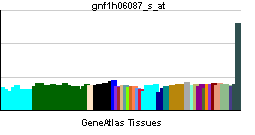CUBN
Jump to navigation
Jump to search
| Cubilin (intrinsic factor-cobalamin receptor) | |||||||||||
|---|---|---|---|---|---|---|---|---|---|---|---|
| Identifiers | |||||||||||
| Symbols | CUBN ; FLJ90055; FLJ90747; IFCR; MGA1; gp280 | ||||||||||
| External IDs | Template:OMIM5 Template:MGI HomoloGene: 37434 | ||||||||||
| |||||||||||
| RNA expression pattern | |||||||||||
 | |||||||||||
 | |||||||||||
| More reference expression data | |||||||||||
| Orthologs | |||||||||||
| Template:GNF Ortholog box | |||||||||||
| Species | Human | Mouse | |||||||||
| Entrez | n/a | n/a | |||||||||
| Ensembl | n/a | n/a | |||||||||
| UniProt | n/a | n/a | |||||||||
| RefSeq (mRNA) | n/a | n/a | |||||||||
| RefSeq (protein) | n/a | n/a | |||||||||
| Location (UCSC) | n/a | n/a | |||||||||
| PubMed search | n/a | n/a | |||||||||
Cubilin (intrinsic factor-cobalamin receptor), also known as CUBN, is a human gene.[1]
Cubilin (CUBN) acts as a receptor for intrinsic factor-vitamin B12 complexes. The role of receptor is supported by the presence of 27 CUB domains. Cubulin is located within the epithelium of intestine and kidney. Mutations in CUBN may play a role in autosomal recessive megaloblastic anemia.[1]
References
Further reading
- Christensen EI, Birn H (2002). "Megalin and cubilin: multifunctional endocytic receptors". Nat. Rev. Mol. Cell Biol. 3 (4): 256–66. doi:10.1038/nrm778. PMID 11994745.
- Bork P, Beckmann G (1993). "The CUB domain. A widespread module in developmentally regulated proteins". J. Mol. Biol. 231 (2): 539–45. doi:10.1006/jmbi.1993.1305. PMID 8510165.
- Birn H, Verroust PJ, Nexo E; et al. (1997). "Characterization of an epithelial approximately 460-kDa protein that facilitates endocytosis of intrinsic factor-vitamin B12 and binds receptor-associated protein". J. Biol. Chem. 272 (42): 26497–504. PMID 9334227.
- Moestrup SK, Kozyraki R, Kristiansen M; et al. (1998). "The intrinsic factor-vitamin B12 receptor and target of teratogenic antibodies is a megalin-binding peripheral membrane protein with homology to developmental proteins". J. Biol. Chem. 273 (9): 5235–42. PMID 9478979.
- Kozyraki R, Kristiansen M, Silahtaroglu A; et al. (1998). "The human intrinsic factor-vitamin B12 receptor, cubilin: molecular characterization and chromosomal mapping of the gene to 10p within the autosomal recessive megaloblastic anemia (MGA1) region". Blood. 91 (10): 3593–600. PMID 9572993.
- Batuman V, Verroust PJ, Navar GL; et al. (1998). "Myeloma light chains are ligands for cubilin (gp280)". Am. J. Physiol. 275 (2 Pt 2): F246–54. PMID 9691015.
- Lindblom A, Quadt N, Marsh T; et al. (1999). "The intrinsic factor-vitamin B12 receptor, cubilin, is assembled into trimers via a coiled-coil alpha-helix". J. Biol. Chem. 274 (10): 6374–80. PMID 10037728.
- Aminoff M, Carter JE, Chadwick RB; et al. (1999). "Mutations in CUBN, encoding the intrinsic factor-vitamin B12 receptor, cubilin, cause hereditary megaloblastic anaemia 1". Nat. Genet. 21 (3): 309–13. doi:10.1038/6831. PMID 10080186.
- Kozyraki R, Fyfe J, Kristiansen M; et al. (1999). "The intrinsic factor-vitamin B12 receptor, cubilin, is a high-affinity apolipoprotein A-I receptor facilitating endocytosis of high-density lipoprotein". Nat. Med. 5 (6): 656–61. doi:10.1038/9504. PMID 10371504.
- Xu D, Kozyraki R, Newman TC, Fyfe JC (1999). "Genetic evidence of an accessory activity required specifically for cubilin brush-border expression and intrinsic factor-cobalamin absorption". Blood. 94 (10): 3604–6. PMID 10552972.
- Birn H, Fyfe JC, Jacobsen C; et al. (2000). "Cubilin is an albumin binding protein important for renal tubular albumin reabsorption". J. Clin. Invest. 105 (10): 1353–61. PMID 10811843.
- Kristiansen M, Aminoff M, Jacobsen C; et al. (2000). "Cubilin P1297L mutation associated with hereditary megaloblastic anemia 1 causes impaired recognition of intrinsic factor-vitamin B(12) by cubilin". Blood. 96 (2): 405–9. PMID 10887099.
- Burmeister R, Boe IM, Nykjaer A; et al. (2001). "A two-receptor pathway for catabolism of Clara cell secretory protein in the kidney". J. Biol. Chem. 276 (16): 13295–301. doi:10.1074/jbc.M010679200. PMID 11278724.
- Yammani RR, Seetharam S, Seetharam B (2001). "Cubilin and megalin expression and their interaction in the rat intestine: effect of thyroidectomy". Am. J. Physiol. Endocrinol. Metab. 281 (5): E900–7. PMID 11595644.
- Kozyraki R, Fyfe J, Verroust PJ; et al. (2001). "Megalin-dependent cubilin-mediated endocytosis is a major pathway for the apical uptake of transferrin in polarized epithelia". Proc. Natl. Acad. Sci. U.S.A. 98 (22): 12491–6. doi:10.1073/pnas.211291398. PMID 11606717.
- Nykjaer A, Fyfe JC, Kozyraki R; et al. (2002). "Cubilin dysfunction causes abnormal metabolism of the steroid hormone 25(OH) vitamin D(3)". Proc. Natl. Acad. Sci. U.S.A. 98 (24): 13895–900. doi:10.1073/pnas.241516998. PMID 11717447.
- Fedosov SN, Berglund L, Fedosova NU; et al. (2002). "Comparative analysis of cobalamin binding kinetics and ligand protection for intrinsic factor, transcobalamin, and haptocorrin". J. Biol. Chem. 277 (12): 9989–96. doi:10.1074/jbc.M111399200. PMID 11788601.
- Crider-Pirkle S, Billingsley P, Faust C; et al. (2002). "Cubilin, a binding partner for galectin-3 in the murine utero-placental complex". J. Biol. Chem. 277 (18): 15904–12. doi:10.1074/jbc.M200331200. PMID 11856751.
- Wahlstedt-Fröberg V, Pettersson T, Aminoff M; et al. (2004). "Proteinuria in cubilin-deficient patients with selective vitamin B12 malabsorption". Pediatr. Nephrol. 18 (5): 417–21. doi:10.1007/s00467-003-1128-y. PMID 12687456.
| This protein-related article is a stub. You can help Wikipedia by expanding it. |